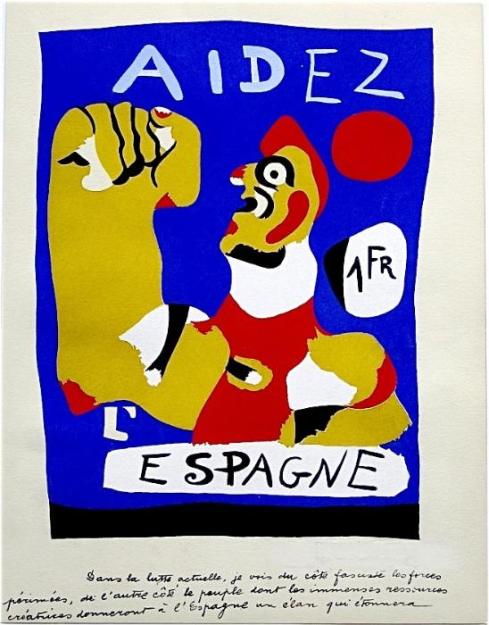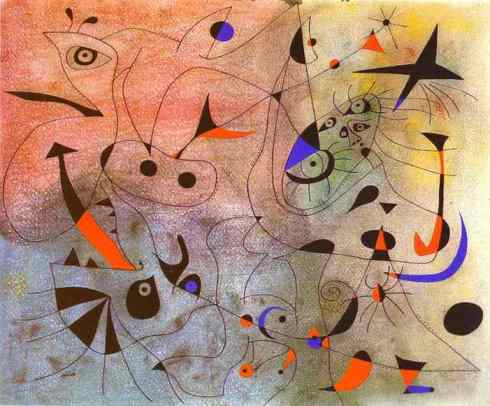The famous Catalan Surrealist artist, Joan Miró i Ferrà, 1893-1983, lived through and documented some of the most significant events of the twentieth century.
He was born in Barcelona and, after training as an artist there, he frequently travelled to Paris and became a key figure in the Surrealist movement. Miró remained in France with his young family during the Spanish Civil War and expressed his protests explicitly in the aptly named Aidez l’Espagne and Le Faucheur, 1937. He returned to Spain in 1940 after the Nazi invasion, and experienced a kind of internal exile under Franco, working in secret at home but gaining fame abroad for his post-war artistry. His response to the Second World War is more disguised in the Constellation paintings of 1940-1941, criticising fascist aggression while living under the dictatorship of Hitler and Mussolini’s ally.
From his home in Mallorca, Miró managed to capture the atmosphere of protest in the late 1960s, at times by blackening or setting fire to his works, as in May 1968 and Burnt Canvas II 1973. He continued to reflect the political mood by creating euphoric explosions of paint in Fireworks 1974.
All these famous works and more will be on display at the Tate Modern from April 14 to September 11 2011 in ‘Joan Miró: The Ladder of Escape’. It is the first major exhibition of Miró’s work to be held in London for almost 50 years. The exhibition will present over 150 of Miró’s paintings, works on paper and sculptures, and span six decades of his career. Certain themes such as Miró’s strong sense of Catalan identity and political engagement run through the collection. But his Surrealist language of symbols and use of colour and imagery, which makes Miró’s work so iconic, is also found in abundance. He is often known as a forefather of Abstract Expressionism for this serene, colourful allure, along with his peers and fellow Surrealists, Pablo Picasso and Salvador Dalí.
The exhibition marks the beginning of ‘Miró & Catalan Culture’, a season of art, dance, music and theatre in London to promote Catalan culture.
Admission £15.50 (£13.50 concessions) For tickets visit: www.tate.org.uk/tickets or call 020 7887 8888
Image 1: yessy
Images 2 and 3: abcgallery
Image 4: angelfloresjr





But it also contains ideas of freedom which in Francos Spain were very dear to the Catalan painter. He came of age with the Catalan independence movement and shared its deep-rooted sense of the possibilities of liberty.